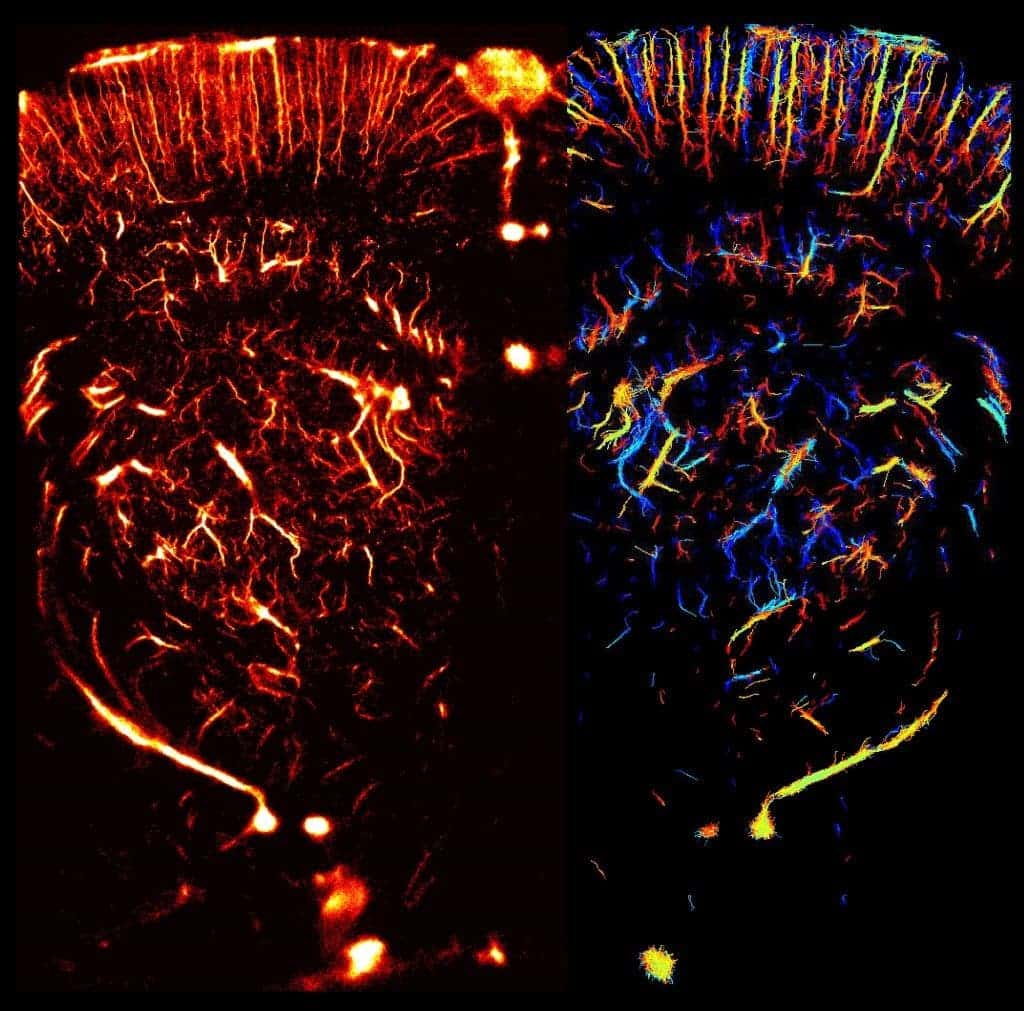In a new study published in Nature, researchers have demonstrated a technique that allows the mapping of organs at microscopic scales; they detail its use and produced images of the microvessels in the brain of a live rat.

Credit: ESPCI/INSERM/CNRS
Current techniques of microscopic imaging are not ideal. Just like in geological imaging techniques, there’s a tradeoff between penetration depth, resolution, and time of acquisition. In other words, if you want to see all the way through the human body, you won’t have good enough resolution – or you will but it will take a very long time. Until now, conventional imaging techniques have worked at milimetre and sub-milimetre scale at best, being limited by one of the fundamental laws of physics: features smaller than the wavelength of the radiation used for imaging cannot be resolved. But Mickael Tanter, a professor at the Langevin Institute and his colleagues have come up with a new approach, and report a new super-resolution.
Like a few other recent studies, they used microbubbles, with diameters of 1–3 micrometres, which were injected into the bloodstream of live rats. They then combined deep penetration and super-resolution imaging in a technique they call ‘ultrafast ultrasound localization microscopy’. With this, they obtained ultra fast frame rates (500 / second), and achieved a resolution equal to the rat brain microvasculature – less than 10 micrometers in diameter (0.01 milimetres).
While this is still a work in progress, authors believe it can help doctors make better diagnostics and better understand how some diseases affect the body.
Was this helpful?



